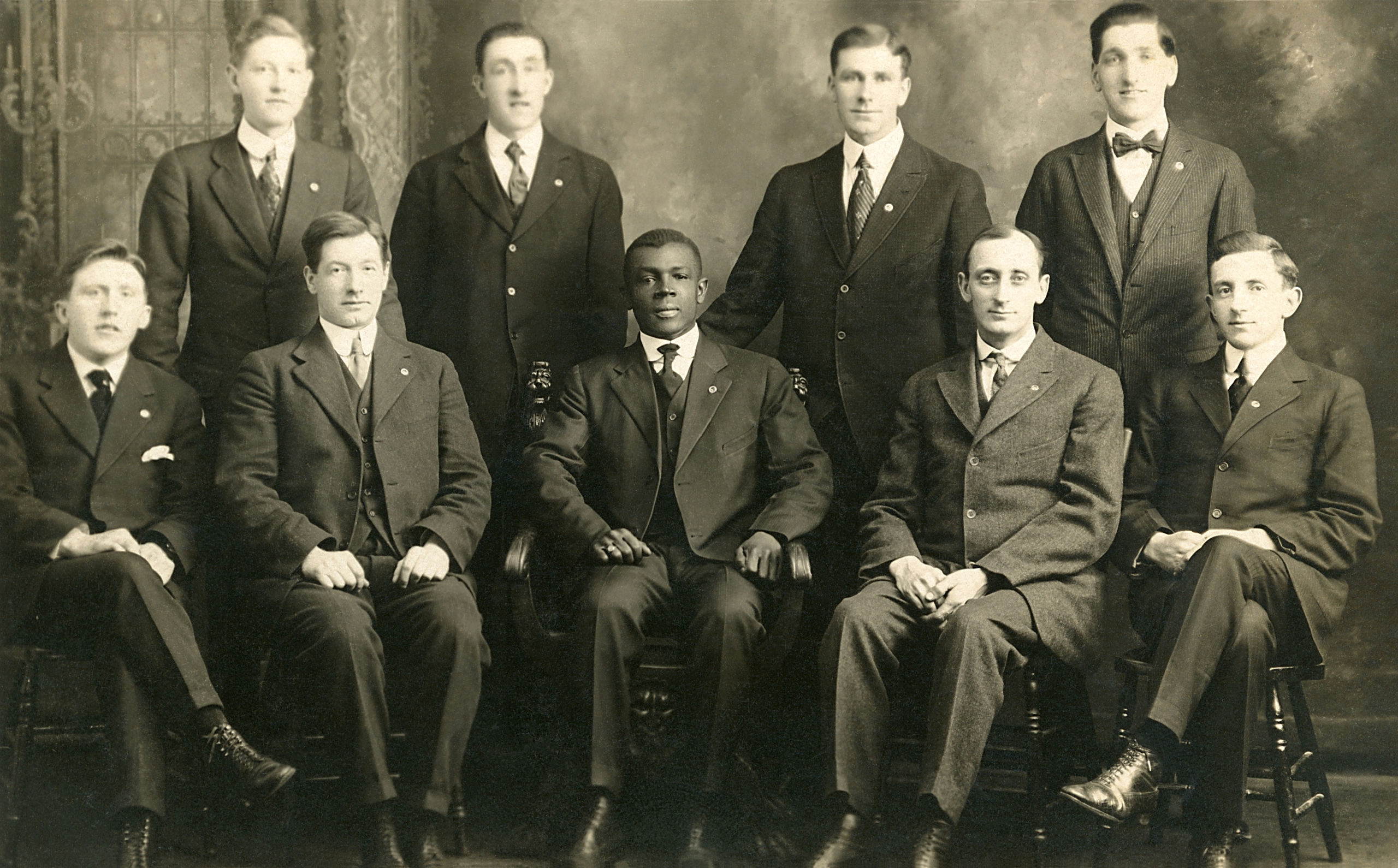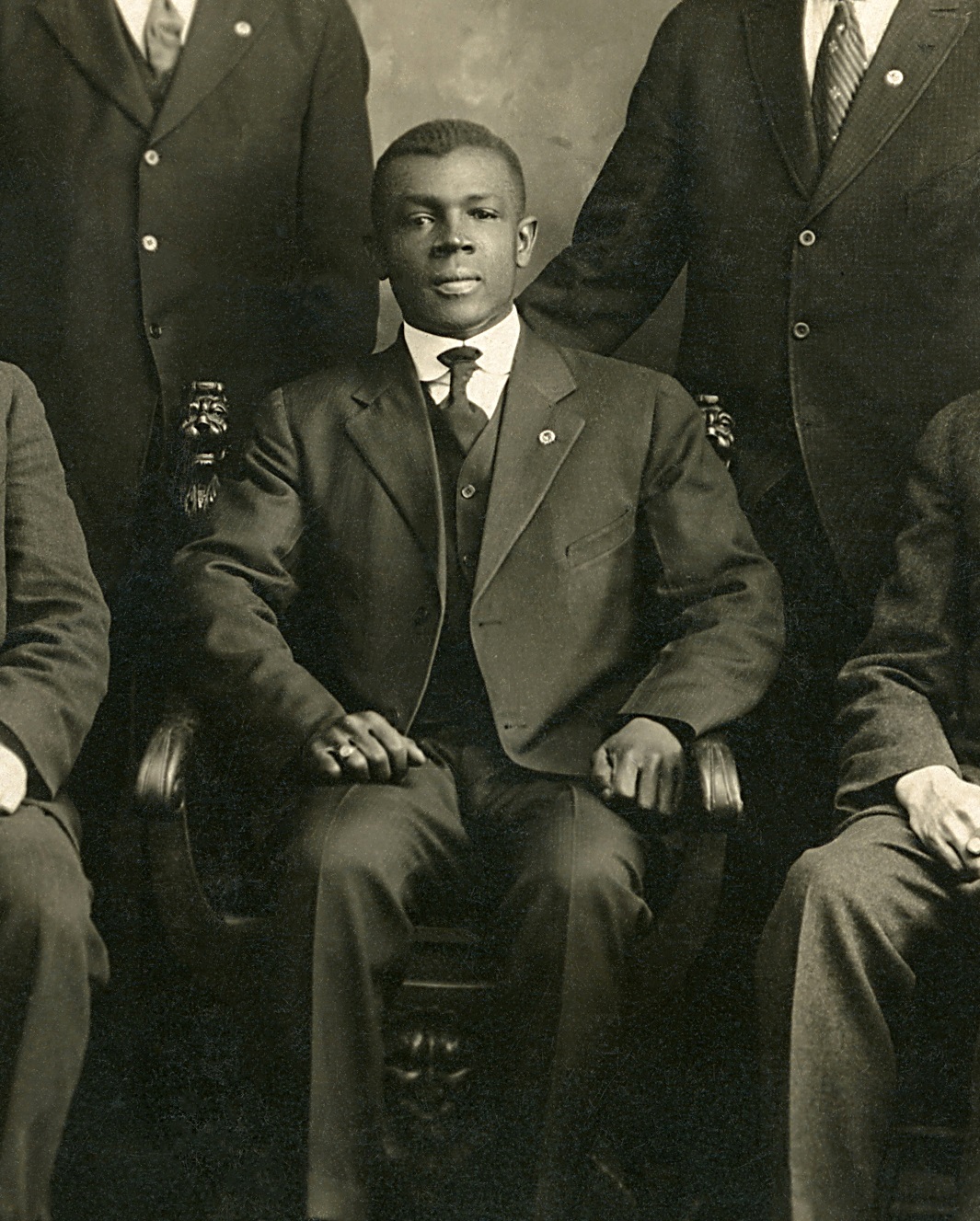Claudius Brown
Photograph
Image
Video
Audio
 Activities
Activities
THINK
Look at this picture and read the Historical Context below. Who was Claudius Brown, and why is his story historically significant?
Hint: Moments in history and primary sources are considered historically significant if they result in change, reveal something important about history, or occupy a meaningful place in the historical narrative.
THINK
Claudius Brown wasn’t from an “enemy” country, but he was imprisoned for refusing to enlist. What are some similarities and some differences between Brown and the other individuals we’ve looked at in this topic?
THINK
Read the Historical Context below. List a few ways in which peoples’ civil liberties were affected by legislation such as the Military Service Act.
Details
 Materials
Materials - Photograph
Historical Context
Choose one of the three levels below to match your needs.
- The Military Service Act made military service mandatory for all male citizens ages 20 to 45. This was known as conscription.
- A small number of individuals belonging to certain religious groups could refuse, claiming the status of conscientious objector. Everyone else had to serve — or risk imprisonment.
- This picture shows Claudius Brown. He tried to claim conscientious-objector status as a Jehovah’s Witness, but was rejected because the courts did not recognize the religion as legitimate. He was sentenced to a year in prison for refusing to enlist.
Another law adopted during the First World War affected civil liberties. The Military Service Act made military service mandatory for all male citizens ages 20 to 45. This was known as conscription. A small number of individuals belonging to certain religious groups could refuse, claiming the status of conscientious objector. Everyone else had to serve — or risk imprisonment.
The debate around conscription was fierce. French Canadians, as well as many farmers, unionized workers, non-British immigrants and other Canadians, generally opposed the measure.
This picture shows Claudius Brown. He tried to claim conscientious-objector status as a Jehovah’s Witness, but was rejected because the courts did not recognize the religion as legitimate.
Brown was sent to a military camp in Seaford, England, where he was tried and sentenced to a year in prison. Deemed “incorrigible” by his superiors, Brown was freed on December 14, 1918.
Other laws adopted during the First World War had a major impact on civil liberties. One such law — the Military Service Act — made military service mandatory for all male citizens ages 20 to 45, if called upon, for the duration of the First World War. This was known as conscription. A limited number of individuals belonging to specific religious groups could refuse, claiming the status of conscientious objector. Everyone else was required to serve — or risk imprisonment.
The debate leading to the passing of the Military Service Act was one of the fiercest and most divisive in Canada’s political history. French Canadians, as well as many farmers, unionized workers, non-British immigrants and other Canadians, generally opposed the measure.
This picture shows Claudius Brown. Originally from Grenada, Brown was living in Winnipeg and working as a sleeping-car porter in March 1918, when he was conscripted. He tried to claim conscientious-objector status as a Jehovah’s Witness, but was rejected because the courts did not recognize the religion as legitimate.
Brown was sent to a military camp in Seaford, England, where he was tried and sentenced to a year in prison for refusing to enlist. Deemed “incorrigible” by his superiors, Brown was freed on December 14, 1918.
Other laws enacted during the First World War denied people from enemy countries their voting rights, removed Indigenous communities from reserve lands to create more farmland, and suppressed the civil liberties of those deemed to be against the war effort.
- The Military Service Act made military service mandatory for all male citizens ages 20 to 45. This was known as conscription.
- A small number of individuals belonging to certain religious groups could refuse, claiming the status of conscientious objector. Everyone else had to serve — or risk imprisonment.
- This picture shows Claudius Brown. He tried to claim conscientious-objector status as a Jehovah’s Witness, but was rejected because the courts did not recognize the religion as legitimate. He was sentenced to a year in prison for refusing to enlist.
Another law adopted during the First World War affected civil liberties. The Military Service Act made military service mandatory for all male citizens ages 20 to 45. This was known as conscription. A small number of individuals belonging to certain religious groups could refuse, claiming the status of conscientious objector. Everyone else had to serve — or risk imprisonment.
The debate around conscription was fierce. French Canadians, as well as many farmers, unionized workers, non-British immigrants and other Canadians, generally opposed the measure.
This picture shows Claudius Brown. He tried to claim conscientious-objector status as a Jehovah’s Witness, but was rejected because the courts did not recognize the religion as legitimate.
Brown was sent to a military camp in Seaford, England, where he was tried and sentenced to a year in prison. Deemed “incorrigible” by his superiors, Brown was freed on December 14, 1918.
Other laws adopted during the First World War had a major impact on civil liberties. One such law — the Military Service Act — made military service mandatory for all male citizens ages 20 to 45, if called upon, for the duration of the First World War. This was known as conscription. A limited number of individuals belonging to specific religious groups could refuse, claiming the status of conscientious objector. Everyone else was required to serve — or risk imprisonment.
The debate leading to the passing of the Military Service Act was one of the fiercest and most divisive in Canada’s political history. French Canadians, as well as many farmers, unionized workers, non-British immigrants and other Canadians, generally opposed the measure.
This picture shows Claudius Brown. Originally from Grenada, Brown was living in Winnipeg and working as a sleeping-car porter in March 1918, when he was conscripted. He tried to claim conscientious-objector status as a Jehovah’s Witness, but was rejected because the courts did not recognize the religion as legitimate.
Brown was sent to a military camp in Seaford, England, where he was tried and sentenced to a year in prison for refusing to enlist. Deemed “incorrigible” by his superiors, Brown was freed on December 14, 1918.
Other laws enacted during the First World War denied people from enemy countries their voting rights, removed Indigenous communities from reserve lands to create more farmland, and suppressed the civil liberties of those deemed to be against the war effort.
Summary
- The Military Service Act made military service mandatory for all male citizens ages 20 to 45. This was known as conscription.
- A small number of individuals belonging to certain religious groups could refuse, claiming the status of conscientious objector. Everyone else had to serve — or risk imprisonment.
- This picture shows Claudius Brown. He tried to claim conscientious-objector status as a Jehovah’s Witness, but was rejected because the courts did not recognize the religion as legitimate. He was sentenced to a year in prison for refusing to enlist.
Essential
Another law adopted during the First World War affected civil liberties. The Military Service Act made military service mandatory for all male citizens ages 20 to 45. This was known as conscription. A small number of individuals belonging to certain religious groups could refuse, claiming the status of conscientious objector. Everyone else had to serve — or risk imprisonment.
The debate around conscription was fierce. French Canadians, as well as many farmers, unionized workers, non-British immigrants and other Canadians, generally opposed the measure.
This picture shows Claudius Brown. He tried to claim conscientious-objector status as a Jehovah’s Witness, but was rejected because the courts did not recognize the religion as legitimate.
Brown was sent to a military camp in Seaford, England, where he was tried and sentenced to a year in prison. Deemed “incorrigible” by his superiors, Brown was freed on December 14, 1918.
In-Depth
Other laws adopted during the First World War had a major impact on civil liberties. One such law — the Military Service Act — made military service mandatory for all male citizens ages 20 to 45, if called upon, for the duration of the First World War. This was known as conscription. A limited number of individuals belonging to specific religious groups could refuse, claiming the status of conscientious objector. Everyone else was required to serve — or risk imprisonment.
The debate leading to the passing of the Military Service Act was one of the fiercest and most divisive in Canada’s political history. French Canadians, as well as many farmers, unionized workers, non-British immigrants and other Canadians, generally opposed the measure.
This picture shows Claudius Brown. Originally from Grenada, Brown was living in Winnipeg and working as a sleeping-car porter in March 1918, when he was conscripted. He tried to claim conscientious-objector status as a Jehovah’s Witness, but was rejected because the courts did not recognize the religion as legitimate.
Brown was sent to a military camp in Seaford, England, where he was tried and sentenced to a year in prison for refusing to enlist. Deemed “incorrigible” by his superiors, Brown was freed on December 14, 1918.
Other laws enacted during the First World War denied people from enemy countries their voting rights, removed Indigenous communities from reserve lands to create more farmland, and suppressed the civil liberties of those deemed to be against the war effort.


